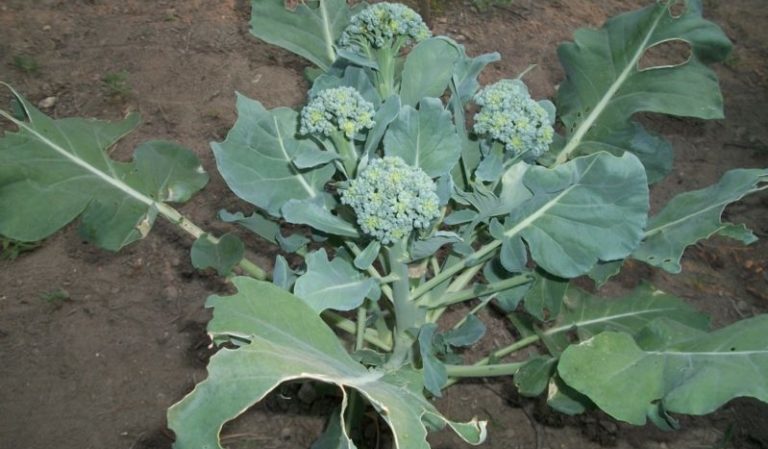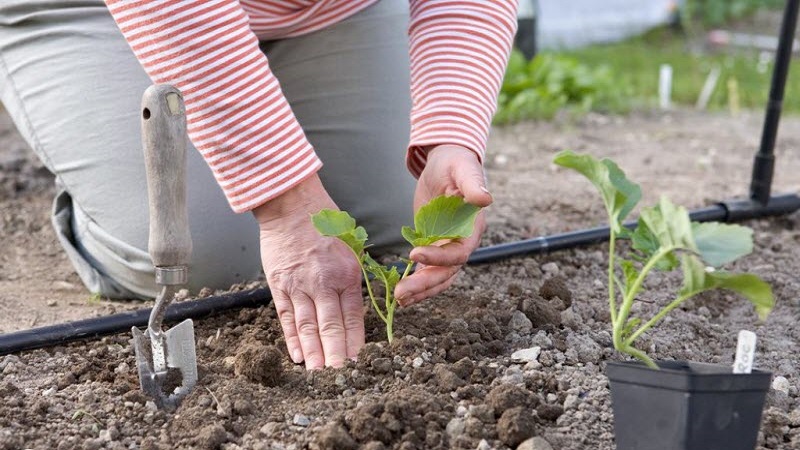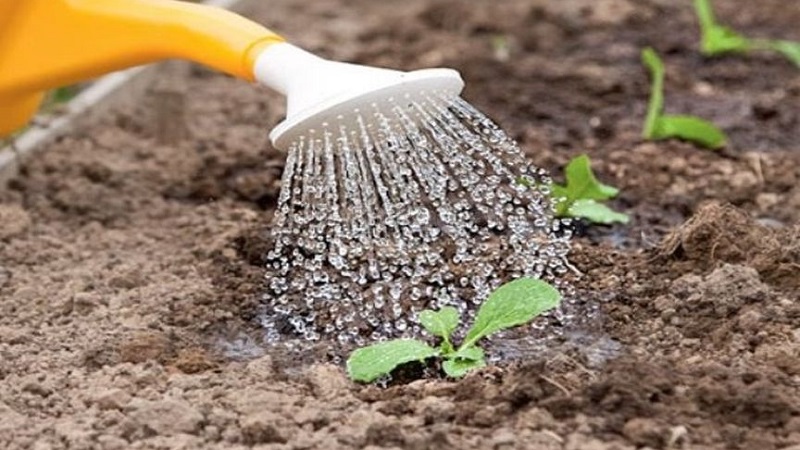Growing and caring for broccoli cabbage outdoors in Siberia
Unpretentious and resistant to low temperatures, broccoli grows well even in regions with cold climates. In the article we will tell you when to sow broccoli for seedlings in Siberia and how to grow it in the garden in open ground and greenhouses.
The content of the article
Growing broccoli seedlings in Siberia
Broccoli asparagus is grown from seed or seedlings... For the Siberian region, it is the second option that is most acceptable, which provides for planting plants with several leaves on the stem. This allows them to quickly adapt to the harsh climate conditions and take root in the soil. But for this, it is a good idea to stock up on quality seed in advance.

When to plant broccoli for seedlings
If at the beginning of May the soil temperature has already increased and stays at 10 ° C, by this time it is time to transfer the seedlings to the open ground. The May date is counted 30 days ago. It is during this time that the seeds will have time to grow into full-fledged seedlings with strong leaves and a stable stem. The seed sowing date is set at the end of April.
Attention! Do not reduce the number of days for broccoli to germinate and harden, even if you are confident in the quality of the planting material.
Sowing and caring for seedlings
It will be possible to get a viable cabbage only from scrupulously rejected seeds. They are dipped in liquid and checked for integrity:
- A solution is prepared from 1 liter of room temperature water and 35 g of non-iodized salt.
- They put seeds in it.
- After 5 minutes, the biomaterial is checked: all the settled grains are suitable for sowing, the floating ones are thrown away.
Selected seeds are placed in clean water to get rid of excess salt. Then they are soaked in aloe juice. Only freshly squeezed product is suitable for this. The plant component disinfects grains and saturates their surface with useful microelements. After 15 minutes from the beginning of the process, the seeds are transferred to a moistened surface or into a prepared container.
After the seeds swell and the first shoots appear, a period of their gradual hardening begins. For this, the ambient temperature in the room is lowered to + 7 ... + 5 ° C for a day. To do this, open a window for airing or take out the material to the glazed balcony.
Sprouted material is transferred into prepared seedling pots - 3 sprouts each. Planting depth should not exceed 2 cm. Broccoli in the ground is watered with water at room temperature, covered with cling film and transferred to a warm place until the first shoots appear.
When to plant in open ground in Siberia

The time to start hardening seedlings comes about 10-15 days before transferring broccoli to open ground:
- The window is opened for 2-3 hours a day. This is done 2 days in a row.
- Then the plants are transferred to the balcony with closed windows for the same period.
- After the transom, it is recommended to gradually open and leave the seedlings for longer periods.
- And only before directly moving into the soil, the culture can spend the night on the balcony.
After a month-long hardening procedure, broccoli seedlings take on the appearance of grown planting material. Only in this state can it be moved without fear. into open ground. Small bushes are planted in the evening and in cloudy weather so that the sun does not have time to scorch the tender leaves of the seedlings. For asparagus cabbage, it is better to allocate an area where there is no constant bright light, and the sun gives only scattered rays.
Reference. Burdock is considered the best neighbor for broccoli. Its wide leaves provide shadow.
By the time the seedlings are transferred, the ground temperature should be at a constant level of + 10 ° C. The soil is prepared in advance for planting young plants, fertilized with minerals. Simultaneously with the transfer, a handful of ash or a scoop of humus is poured into each hole.
The soil must be moist. The cabbage is moved into the holes dug at a distance of at least 30 cm, the gap between the rows is 50 cm. It is forbidden to bare the root - it remains with its earthen lump. When planting, it is completely hidden in the hole so that the earth reaches the first leaves.
How to plant seedlings

The germination period of seedlings is about a month, so there is time to prepare the soil for transferring broccoli seedlings into it. For this purpose, the following works are performed:
- Dig up the future site for cabbage with the addition of organic matter.
- They clean it from the present plant debris.
- Check the acidity of the soil. For broccoli, ideal numbers range from 6.7 to 7.4 units.
- If an elevated pH level is detected, the soil is limed.
The scheme for planting broccoli seedlings is as follows: create a wide furrow 35 × 60 cm in size. It is better to plan the event in the evening hours.
Young plants are carefully lowered into the planting hole and watered, covered with earth and compacted around the stem. Then they moisten and cover with cling film, which is removed only after the night temperature is set above + 5 ° C.
Outdoor broccoli care in Siberia

Asparagus cabbage is distinguished by the resistance of the planting material, therefore it does not cause much trouble throughout the growing season. Of the agrotechnical measures, only regular watering, feeding, loosening and weeding are mandatory.
Young seedlings are watered no more than 1-2 times a week. If the recommended regime is violated, there is a risk of drying out or waterlogging of the soil. After the procedure, the trunk circle is loosened and weeds are removed. If the summer is rainy, weeding and loosening is reduced to 1 time per week.
Feeding broccoli for the entire period is carried out in 3 stages:
- 14-15 days after disembarkation to a permanent place;
- 3-4 weeks after the first procedure;
- a month before the planned harvest.
For this purpose, the agrarians of the industrial complex are advised to alternate organic fertilizers and mineral additives.
Subject to all cultivation recommendations and caring for broccoli in the open field, a quality harvest is guaranteed for the gardener.
It is interesting:
Description broccoli Lord F1 with photos, reviews and recommendations for growing
How to store broccoli properly
High-yielding late ripening hybrid of broccoli cabbage Parthenon f1
Growing in a greenhouse

For the northern lands, the best option is to grow broccoli in greenhouse conditions. After all, under the cover of the film, plants will be protected from the negative effects of ultraviolet rays. Greenhouses with installed heating are able to protect young plants from harmful changes in temperature, wind and snow.
In a sheltered shelter, asparagus develops equally well both from seeds and from finished planting material. For greenhouses, the seedlings are prepared about 5 weeks before being transferred to the greenhouse. Seeds are laid in the ground in mid-May. A prerequisite is the establishment of a plus temperature at night from 12 ° C and from 18 ° C in the daytime.
Asparagus cabbage requires a deep fertile layer with a thickness of at least 10 cm. It is prepared in autumn. For this, compost and lime are added to the soil. The last component can be replaced with eggshell crumbs.
2 weeks before planting the seedlings, the soil is processed again: phosphorus-potassium and nitrogen fertilizers are applied, which promote the growth of young plants.Ready seedlings, characterized by the presence of 5 leaves on each plant, are planted in prepared and moist soil.
Young broccoli will adapt more quickly if the soil from the temporary pots matches the greenhouse soil. The plants are planted at a distance of 30-40 cm. When transplanting, make sure not to damage the delicate roots.
Attention! Watering is carried out when the root system of the plants is mastered and gets stronger (not earlier than in a week).
Conclusion
Asparagus is characterized by resistance to temperature fluctuations. When grown from seeds, the required germination and soil preparation time is clearly laid down so as not to spoil the planting material. And it is better to completely attend to the creation of a greenhouse on the site. Under these conditions, a quality broccoli crop is more likely to be obtained.